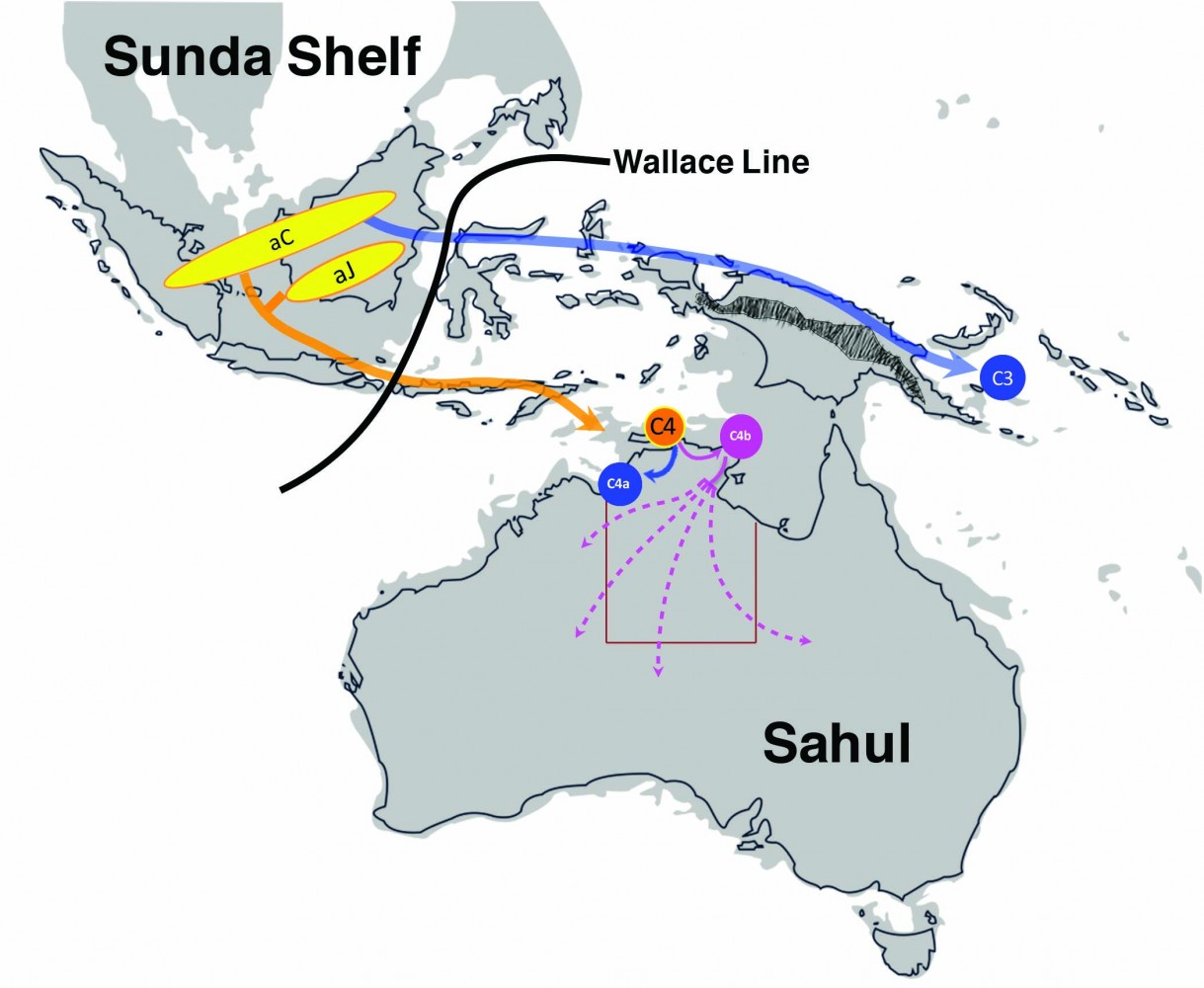19 Mar 2019
Hepatitis B virus sheds light on ancient human population movements into Australia
Australian researchers have used current hepatitis B virus (HBV) genome sequences to deduce ancient human population movements into Australia, adding weight to the theory that the mainland Aboriginal population separated from other early humans at least 59 thousand years ago and possibly entered the country near the Tiwi Islands.

The initial migration route for HBV/C4 into the Tiwi Islands / East Arnhem (orange arrow). Credit Lilly Yuen
The discovery was made as an offshoot of the Characterising Hepatitis B in Indigenous Australians thRough Molecular epidemiology (CHARM) study, commenced in 2010 by the Menzies School of Health Research (Menzies). Chronic HBV infection is endemic in Australian Aboriginal and Torres Strait Islander people and is an important cause of morbidity and mortality due to liver disease and liver cancer.
As part of caring for patients with hepatitis B infections in the CHARM study, the research team collected HBV samples from people living in over 30 communities across the NT and found HBV isolated from Aboriginal Australians is a unique strain not found anywhere else in the world, known as HBV/C4.
In the same way that human genome sequences are used to trace ancient human migration, the researchers predicted they could use modern day viral genomes to infer the movement of the people that have carried these viruses over many generations.
Published in Molecular Biology and Evolution, the study used cutting-edge evolutionary analyses of the HBV DNA sequences together with archaeological fossil and human genome data. The researchers found that the precursor of the modern HBV/C4 virus entered Australia over 51 thousand years ago, and then separated into two groups; one centred in the northwest region, and a second in the central/eastern region of the NT. Strikingly, the two groups share a similar geographical distribution to the two main divisions of Aboriginal Australian languages spoken in Australia today.
Co-author on the paper, the Royal Melbourne Hospital’s Dr Margaret Littlejohn, a Senior Medical Scientist in the Victorian Infectious Diseases Reference Laboratory at the Doherty Institute, said that the entry point and timing of ancient human migration into continental Sahul – the combined landmass of Australia, New Guinea and Tasmania – are subject to debate.
“As we were analysing the sequences of HBV isolated as part of this study, we noted that the virus sequences had very strong geographical connections to the communities we visited,” said Dr Littlejohn.
“This led us to postulate that we might be able to use this geographical relationship to find out the origin of HBV and how long it might have been in Australia. This is the first time viral genomes have been used in this way in Australia.”
Another co-author on the paper, Professor Josh Davis, Senior Principal Research Fellow at Menzies, said the discovery had generated great interest with Aboriginal research partners and patients.
“Most pleasingly, it has raised the profile of hepatitis B in communities. Community members have asked to find out more about hepatitis B and how they can be tested and treated,” said Professor Davis.
“It’s really exciting to take a novel approach, and use viral genetics to help tell the story of Australia’s first people”.
The study was endorsed by an Indigenous Reference Group comprised of members representing six different remote communities from across the NT and established by the Menzies Hepatitis B Research Program. The researchers also ensured that results were fed back to the main communities where samples came from.
Senior Aboriginal Health Practitioner, Sarah Bukulatjpi, who is also a co-author on the paper, said: “I am really pleased that we are finding out more details about HBV found in Aboriginal people. This can only help to eliminate hep B for the future.
“It is good for us to learn about this and for us not to be silent or feel shame; the fact the virus is so old helps to add to the evidence that Aboriginal people have been in Australia for a long long time,” she concluded.
The study was a collaboration between researchers from the Doherty Institute in Melbourne; Menzies School of Health Research, Charles Darwin University and Royal Darwin Hospital in Darwin; and Ngalkanbuy Clinic in Galiwin’ku.
Media Enquiries
Catherine Somerville
Senior Media and Communications Officer Doherty Institute
P +61 (0) 3 8344 8378
M +61 (0) 422 043 498
catherine.somerville@unimelb.edu.au

